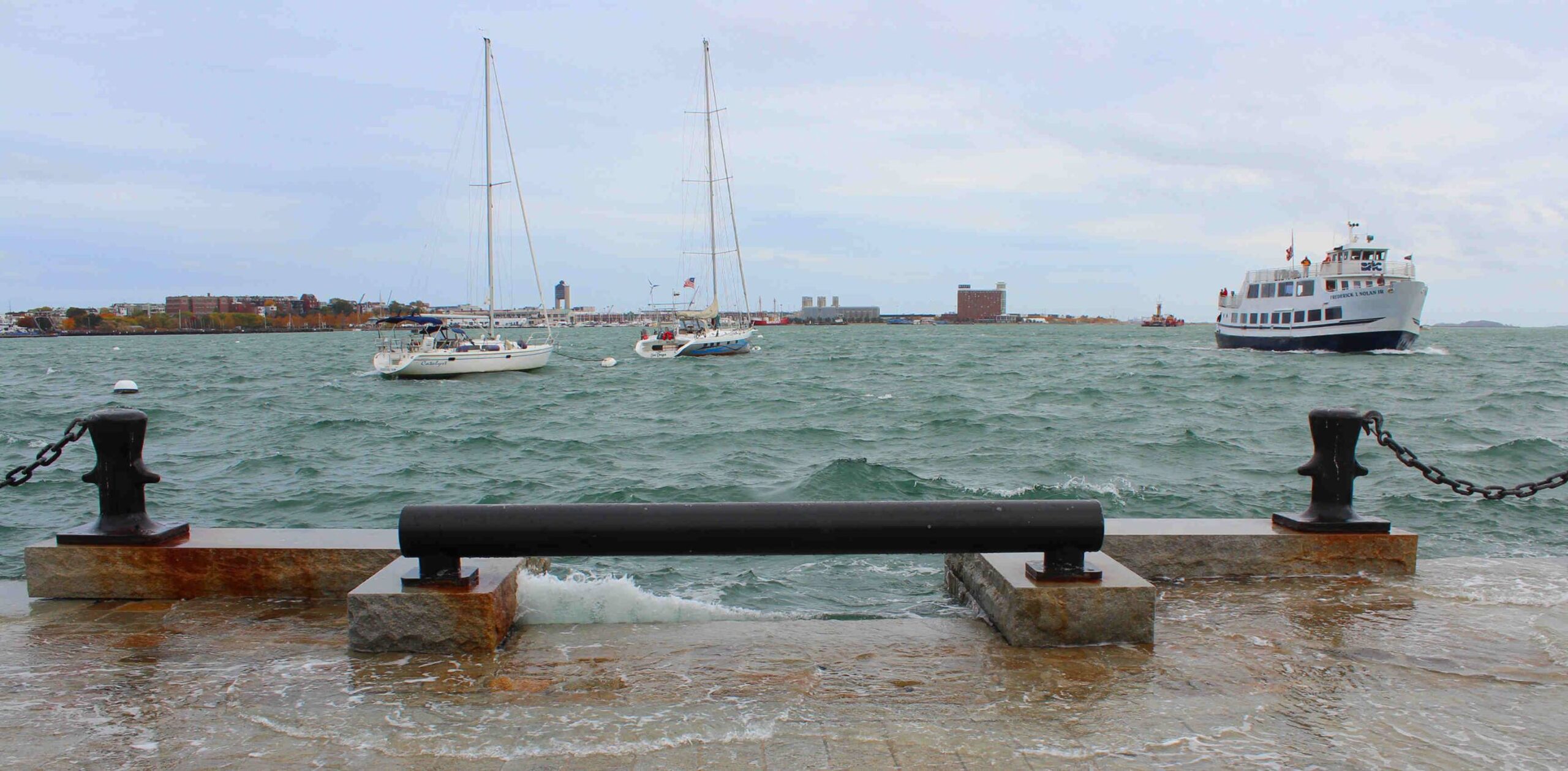While the broad outlines of how climate change would impact Boston have been known for some time, it is only recently that we have developed a more definitive understanding of what lies ahead. That understanding was advanced considerably with the publication of Climate Change and Sea Level Rise Projections for Boston by the Boston Research Advisory Group (BRAG).
The BRAG report is the first major product of “Climate Ready Boston,” a project led by the City of Boston in partnership with the Green Ribbon Commission and funded in part by the Barr Foundation. The BRAG team includes 20 leading experts from the region’s major universities on subjects ranging from sea level rise to temperature extremes. University of Massachusetts Boston professors Ellen Douglas and Paul Kirshen headed the research.
The BRAG report validates earlier studies, concluding Boston will get hotter, wetter, and saltier in the decades ahead (see figures below). But the group has produced a much more definitive set of projections than existed previously, especially for the problem of sea level rise. BRAG also concluded that some of the effects of climate change will come sooner than expected, accelerating the urgency of planning and action.



The BRAG’s regional assessment of sea level rise is the first to incorporate new findings about the gravitational effects of ice-sheet melt, ocean dynamics, and land subsidence that have special significance for Boston and New England. These factors are combined with more well-known contributors to sea level rise: thermal expansion and ice-sheet melt. BRAG concludes that relative sea level rise in Boston will “likely exceed the global average throughout the 21st century,” regardless of how effective the international community is in reducing carbon emissions.In addition, because there is a large amount of inertia built into the ocean system, sea level rise will continue well beyond 2100, even if all green house gas emissions were stopped today.
The BRAG team projects 4 to 8 inches of sea level rise (above Boston Harbor levels in 2000) by 2030 and 7 inches to 1.5 feet by 2050. For the latter half of this century, the range of projections diverges more significantly, with 2.4 to 7.4 feet projected by the end of the century. The lower end of this range reflects a moderate emissions path and the higher end reflects a higher emissions trajectory (see Table 1-1 in the BRAG report for more detail). The BRAG team asserts there is a two-out-of-three chance that changes in sea level within these ranges will occur—a sobering thought for a city where much of the waterfront lies within a foot or two of the water at high tide. (Note also that the BRAG scientists found that the maximum amount of relative sea level rise possible by the end of the century is about 10 feet—but, fortunately, the likelihood of that happening or being exceeded was pegged at about 1 in a 1,000).
While the scientists in the BRAG team believe that intensity of tropical storms (e.g., hurricanes) is likely to increase over time, they found that there is not yet enough data to reliably project precisely how storm regimes that affect Boston will change.
Regardless of how different future storms are in terms of frequency and intensity, one of the most important consequences of rising seas in Boston Harbor will be increases in the frequency of major, storm-induced flooding. Because the level of water in Boston Harbor will get steadily higher over the decades ahead, severe flooding that presently has only a 1% chance of occurring in any given year could have a higher than 20% annual likelihood by the year 2050. And by 2100, severe flooding may occur as frequently as every day at high tide—even if there is no change in the intensity or frequency of tropical storms (see Table 2-1 in the BRAG report).
Projections from the BRAG report will inform the next phase of Climate Ready Boston, a detailed vulnerability assessment of what and whom will be most at risk over the decades ahead and what kinds of resiliency initiatives should be launched to address those risks.
At the same time, the new body of information from the highly respected team of scientists at BRAG should provide a much stronger and more credible basis for siting and designing new buildings, regulating new development throughout the city, and building more resilience into critical infrastructure. This calls for a great deal of cooperation between the public and private sectors. But we know enough now to get started. Let’s not wait until the next storm hits.




